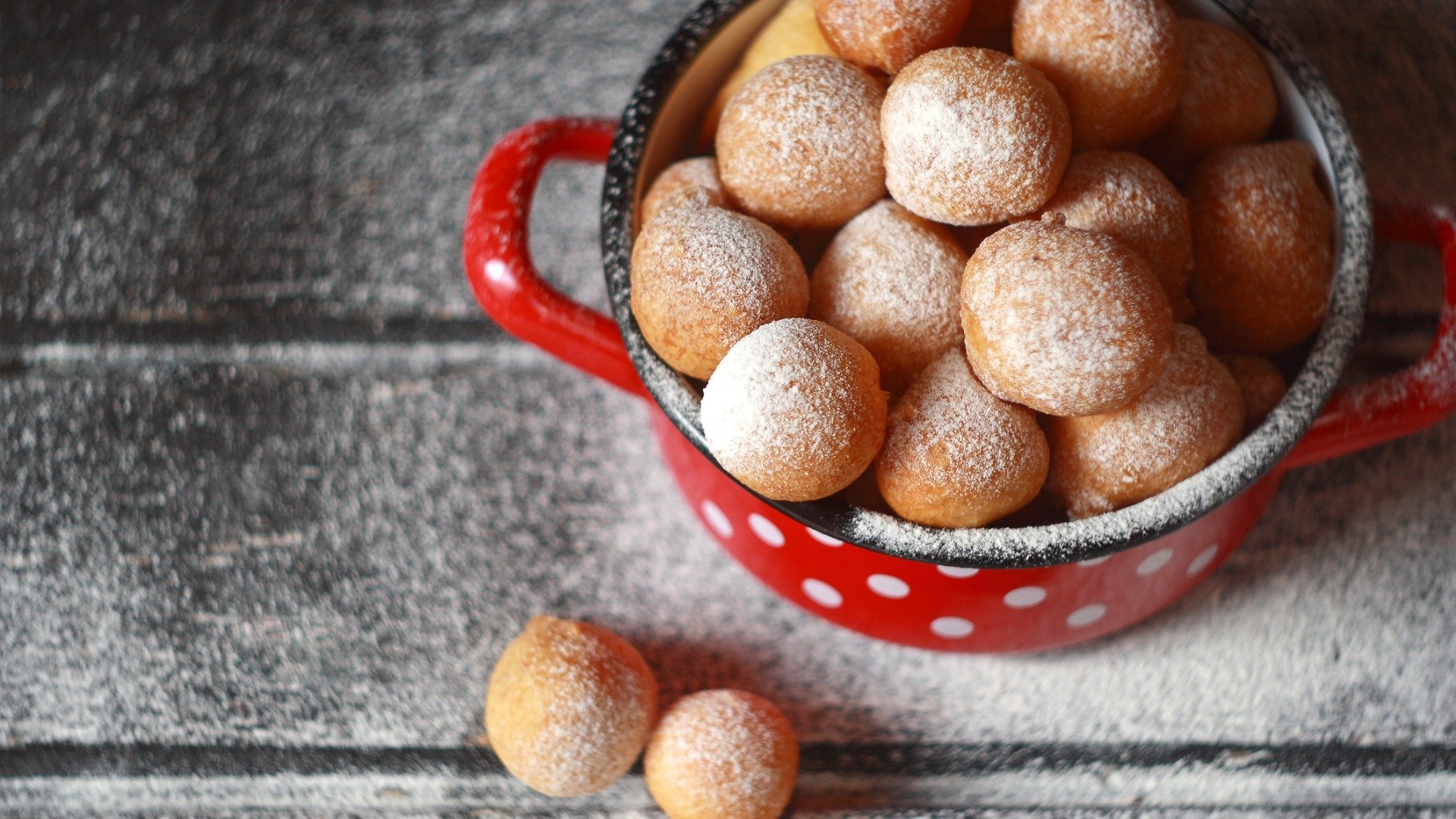During your next trip to Croatia, don’t miss the chance to try some – or all – of these traditional Croatian desserts.
Croatians love desserts. No matter how much food we may have had, there’s always room for dessert. Croatian dessert recipes are written in notebooks and passed down through generations. While some traditional desserts come and go out of fashion, others are timeless. Here’s a list of the best Croatian desserts to try on your next Croatia vacation.
10 Croatian Desserts You Have To Try
1. Kremšnita
For many Croatians, Kremsnita (custard cream cake) is the queen of Croatian desserts. The name comes from the German word Cremeschnitte and you can find this delicacy in many central European countries, most famously at Lake Bled in Slovenia.
The origin of this traditional cake is unknown. Yet, all these countries were once part of the Austro-Hungarian Empire. Hence, the cake is available throughout the region, with some variations. The taste of Kremsnita takes me back to my childhood when every birthday, anniversary, or holiday was marked by everyone’s favorite dessert.
The classic Croatian Kremsnita is a cake made of fine yellow egg custard and sometimes a bit of whipped cream, in between layers of golden flaky pastry crust. The cake is one of the symbols of Samobor, a small town that lies eighteen miles from the capital. Locals in this picturesque town take great pride in their version of the cake, Samoborska Kremsnita.
A pastry chef, Đuro Lukačić, created the original recipe in the 1920s after returning to his hometown to work in his brother’s pastry shop. He had spent many years working in prestigious pastry shops in Vienna, Budapest, and Zagreb, and he combined several recipes he liked to create his famous version.
Samoborska Kremsnita is simple: two layers of puff pastry, the top sprinkled with icing sugar, with mainly egg custard filling and a thin layer of whipped cream. A thing that is unique to Samobor is the fact that they serve the cake warm. Back in the day, the cake was so popular that people waited in line to buy a piece. Since the demand was so high, there was no time for the cake to cool. You can enjoy the original cake at the U Prolazu pastry shop in the center of Samobor.
Zagreb has its own version, Zagrebacka Kremsnita, which has chocolate icing instead of the top crust. You won’t find this type in a warm version, but it’s equally yummy. The author of the idea is Stjepan Vincek, the owner of Vincek, the most popular pastry shop in Zagreb.
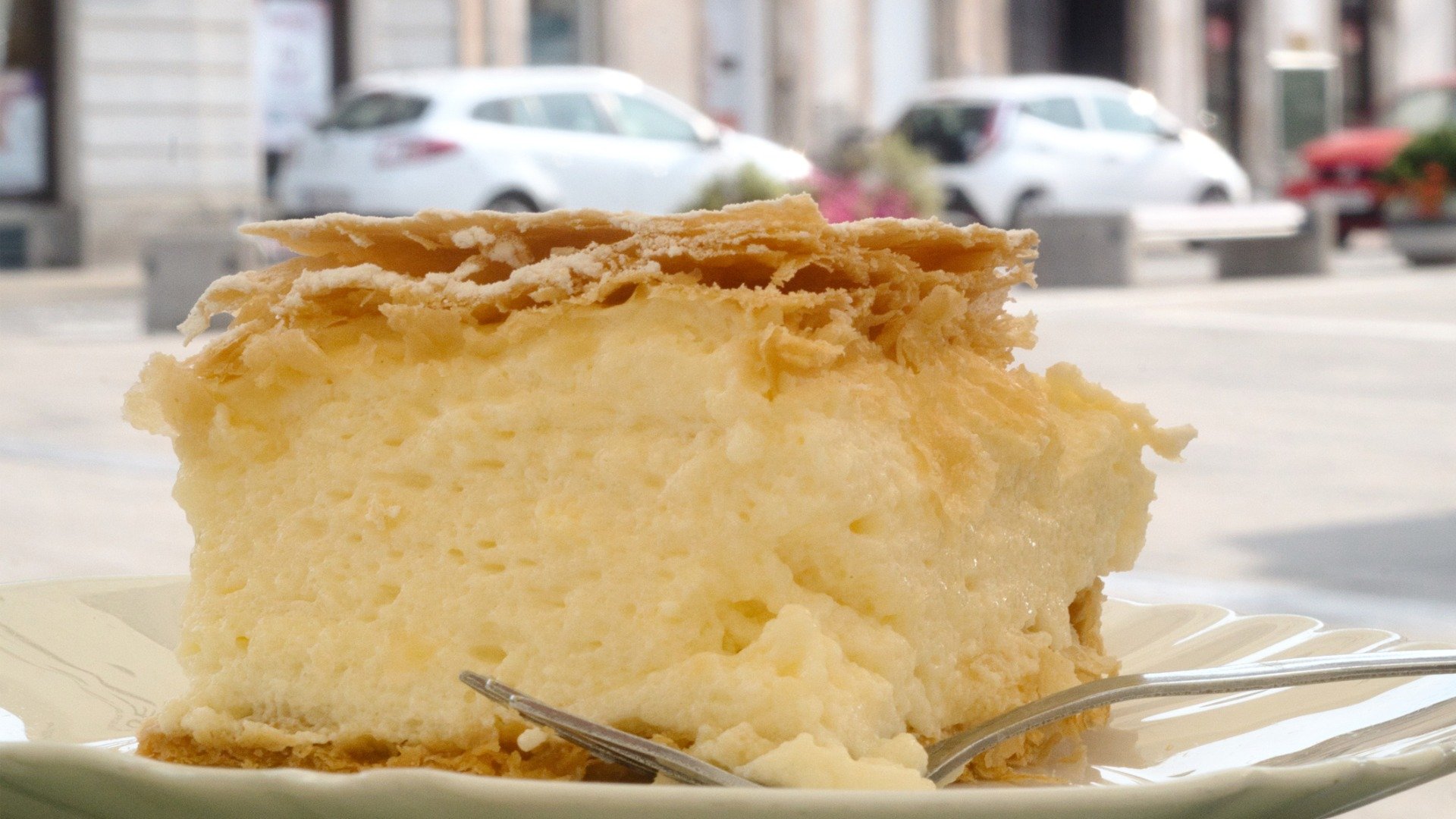
2. Breskvice
Breskvice are small colorful bites that look like peaches, have a sweet peach flavor, and are named accordingly. Apart from Croatia, you can find them in other ex-Yugoslavian countries. They are served at weddings, birthday parties, or anniversaries, usually on a plate full of small cakes and cookies. In Croatia, holidays and celebrations don’t feel the same without Breskvice.
Their outside is made of a cookie dough mixture, and the texture reminds you of soft cookies. You need to hollow out the cookies to make space for the filling, which connects the two halves of each little peach. Nothing is wasted, so you make the filling by adding chocolate, peach jam, toasted hazelnuts, and a hint of rum to the crumbs you removed from the pit. You dip the finished peaches in colored milk and roll them in sugar. The end result is a perfect little bite that melts in your mouth.
Breskvice treats are a nightmare to make because there is so much work to do and it seems to take forever. Luckily, you can sometimes find them in supermarkets, and we are forever grateful to all those diligent hands who put a lot of effort into making them.
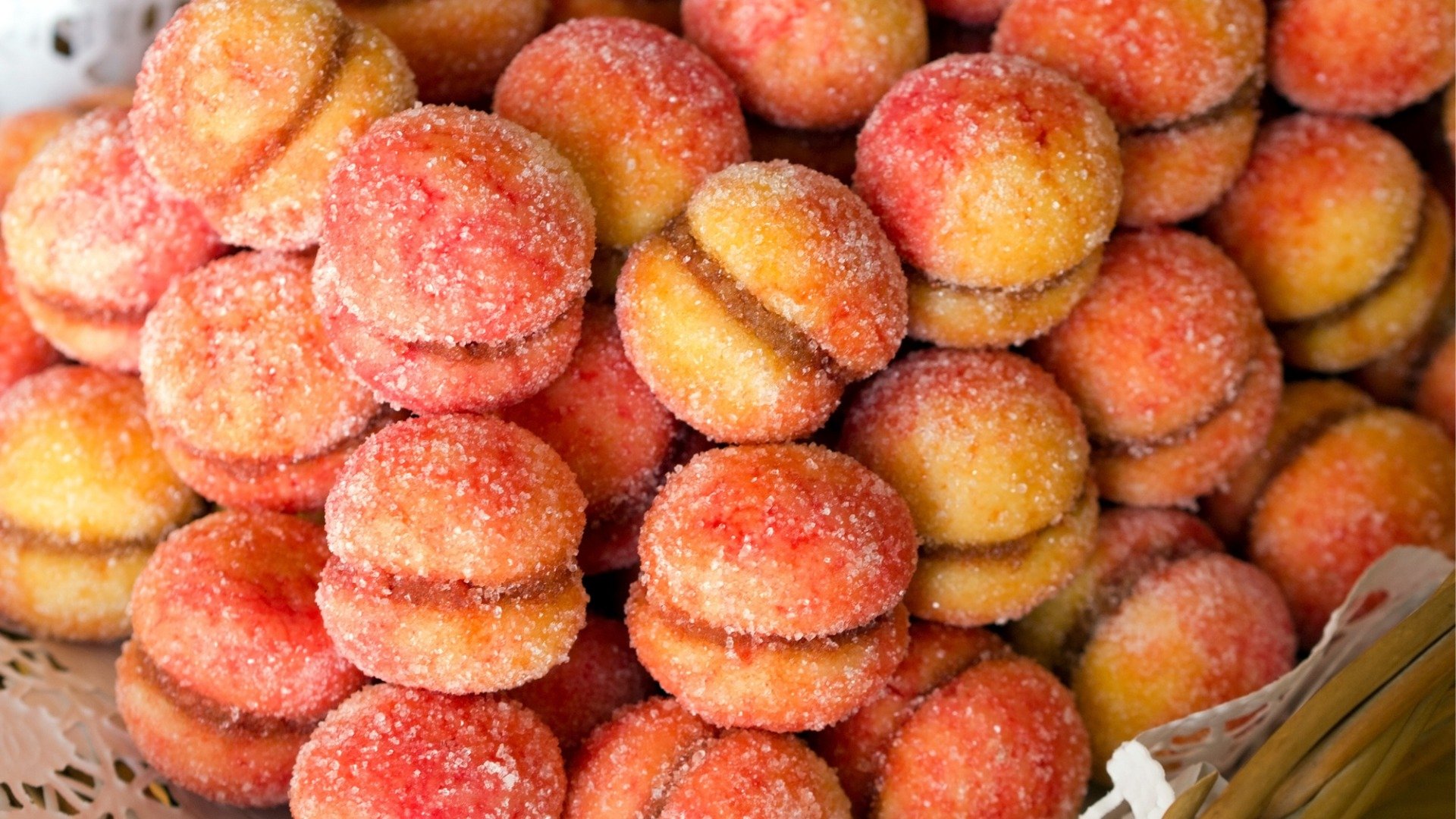
3. Mađarica
Madarica, a layered chocolate cake, is another fantastic sweet treat you can find on the same platter as Breskvice and many other cakes and cookies. It’s a timeless classic that will make you lick your fingers and reach for more. We don’t know anyone who can stop at just one piece. The name is the Croatian word for a Hungarian lady. We can only guess that the cake got this name because it looks like popular Hungarian cakes Zserbo, Esterhazy, and Dobos.
This delightfully rich dessert consists of five layers of thin cake, creamy chocolate, and dark chocolate glaze on top. Making Madarica takes time and skill since it involves very thin cake layers that can easily break. I remember my mom losing her calm every time a layer would break and stating she would not make Madarica ever again. Having to cut the cake into small identical rectangles isn’t encouraging either.
Luckily, you can sample Madarica at traditional pastry shops around Croatia or buy a whole box in some supermarkets. For me, though, my mom’s Madarica still tastes much better, despite a broken layer or two.
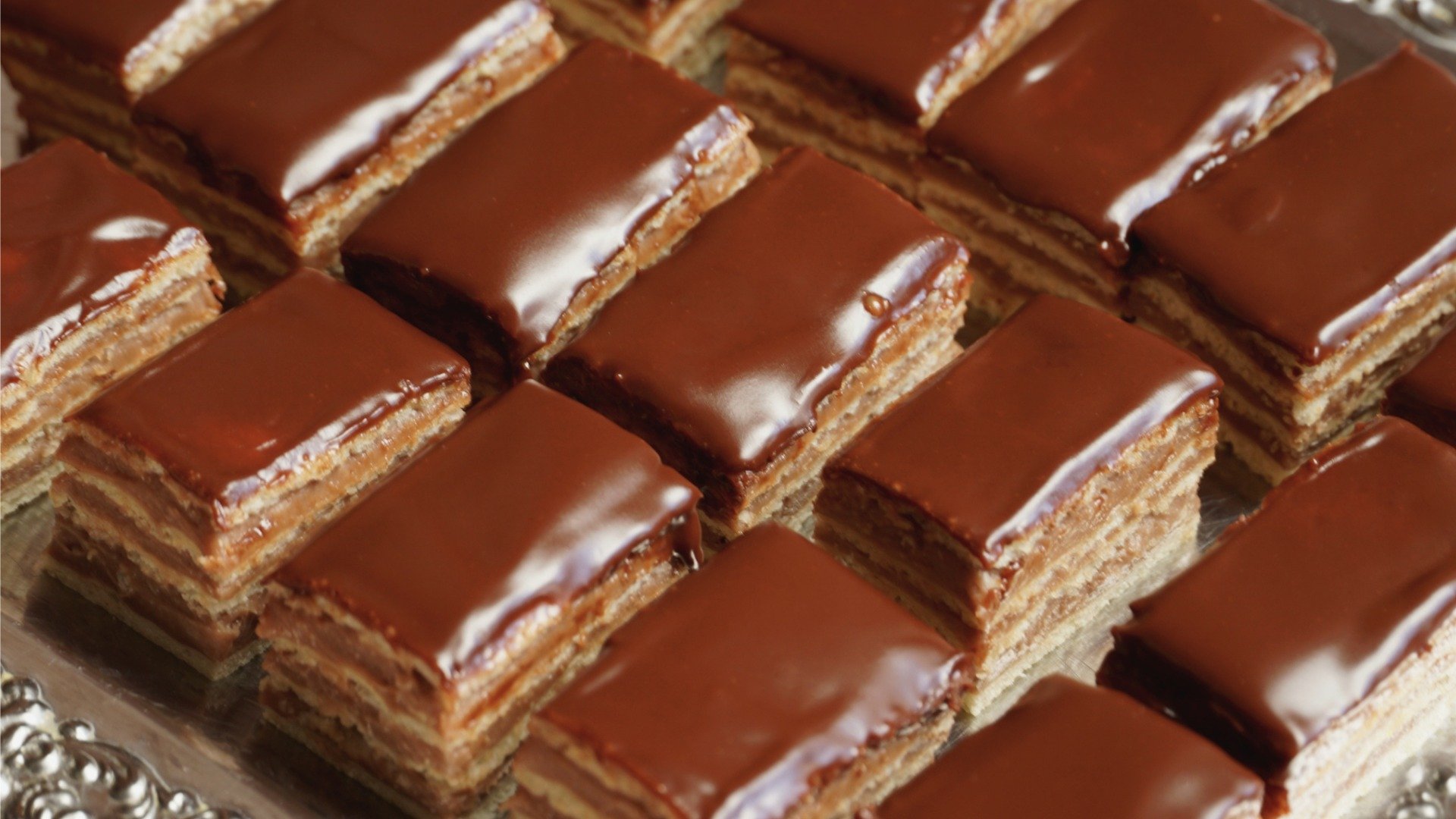
4. Fritule
Fritule (or Prikle) are small deep-fried cakes with powdered sugar, melted chocolate, or caramel on top. Similar to the Venetian Fritole, they are traditional sweet snacks originating in Dalmatia. Nowadays, they are popular all over Croatia and prepared mostly around Christmas. There’s no Christmas Eve without the scent of Fritule, a true symbol of Christmas in Croatia.
To make the basic dough for Fritule, you need flour, eggs, milk, butter, and sugar. To make them juicier, you can add raisins or grated apples. Experienced Fritule makers claim that the secret to making the best fritters is the vigorous mixing of the ingredients until there are bubbles in the dough. It’s best to add a bit of alcohol to the dough, such as rum, cognac, maraschino liqueur, or rose brandy, to make it airy and give it a nice aroma.
You deep-fry the dough by the spoonful, a few pieces at a time, to make sure they don’t stick together or burn. The result should be lightly crisp and golden brown ball-shaped bites, soft and fluffy on the inside. Then, you drain them with a slotted spoon and put them on a plate lined with absorbent paper to remove excess oil, before coating them generously with powdered sugar, chocolate, or caramel glaze.
You can find Fritule at many food stalls around Zagreb during Advent when Zagreb turns into a winter wonderland. Occasionally, you can also find them in traditional taverns in Istria and Dalmatia.
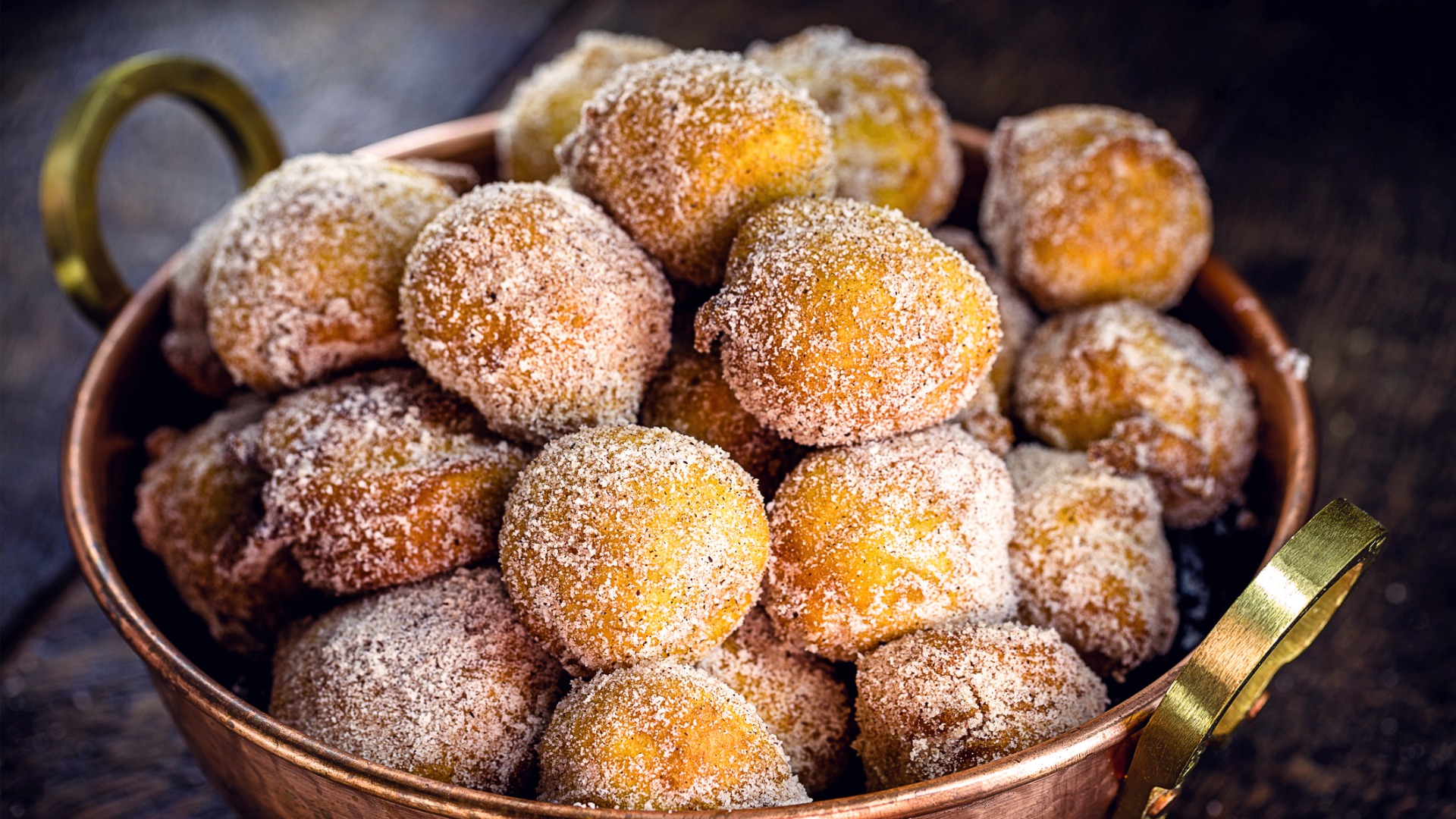
5. Paprenjaci
Paprenjaci (or black pepper cookies) are crispy and aromatic cookies that are a staple of Croatian cookie jars. These Croatian cookies date back to Renaissance times when Papar was the name for a group of spices that included nutmeg, cinnamon, and cloves. Originating from the Island of Hvar, specifically Stari Grad, Paprenjaci cookies were prepared as gifts for newborns or to be offered as Christmas sweets and wedding treats.
Paprenjaci have a complex flavor profile for seemingly simple cookies. They are made with flour, eggs, honey, olive oil, Prosek (sweet dessert wine), saffron, cinnamon, nutmeg, baking soda, and cloves. For reference, imagine gingerbread cookies, cut with wooden molds sporting festive designs, and just the right amount of spices. Traditional Paprenjaci were hand-cut and painted to resemble horseshoes, roosters, fruit, religious iconography, or ornate and delicate designs with white frosting.
You are likely to run into one of the many varieties of this popular treat during a stay in Croatia. Paprenjaci can be easily found in delis, souvenir shops, and every duty-free shop in Croatia. This simple biscuit has slowly worked its way into the collective national consciousness to become a valuable traditional treat and a hugely sought-after souvenir. It’s part of Croatia’s intangible cultural heritage.
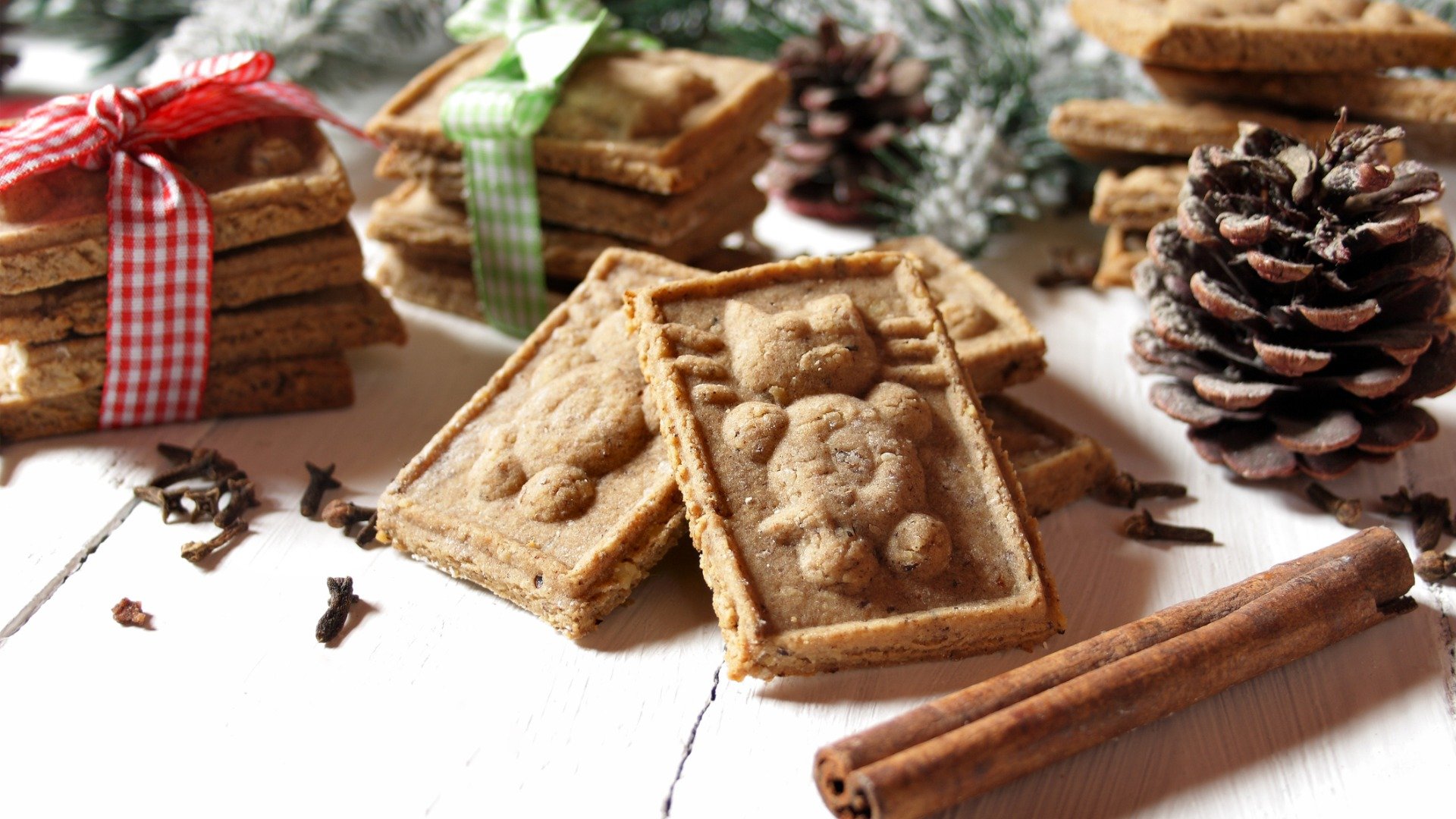
6. Makovnjača & Orehnjača
Makovnjaca and Orehnjaca/Orahnjaca are flavorsome yeast dough pastries filled with a sweet filling, either poppy seed (Makovnjaca) or walnut (Orehnjaca). The long tradition of making poppy seed or walnut rolls is strongly implanted in all parts of Croatia.
The specific scent and flavors of these homemade delicacies are cherished childhood memories for many Croatians. Our grandmothers and great-grandmothers’ authentic recipes are well preserved and kept as the most important family secrets. Although there are delicious desserts similar to Croatian poppy seed or walnut rolls in some parts of Central and Northern Europe, Croatians proudly consider them their national desserts.
The story of Makovnjaca and Orehnjaca starts right by the oven, in early childhood. Starting young is important as it takes time to master the skill of making a soft dough. However, a child is not permitted to knead the dough. Children patiently sit next to their grandmothers, observing their gentle moves.
It takes time and many mistakes before the next generation is ready to carry on the family tradition. The baked dough must be soft and airy on the inside and crispy on the outside. The perfect dough texture can only be achieved by carefully measuring all the ingredients and long, patient mixing and kneading. Once mixing and kneading are done, the dough should be given a rise before filling and a second rise before baking.
Hand to hand with soft dough, the fresh, aromatic, and moist filling is an equally important component of the homemade rolls. Freshly ground walnuts or poppy seeds are mixed with boiling milk, sugar, lemon zest, cinnamon, a few drops of rum, and, sometimes, raisins.
Once baked, the rolls are cut into slices and served with powdered sugar on top. Of course, nothing beats homemade Makovnjaca and Orehnjaca, but you can often find these Croatian desserts in traditional Croatian restaurants or buy a whole loaf at some supermarkets.
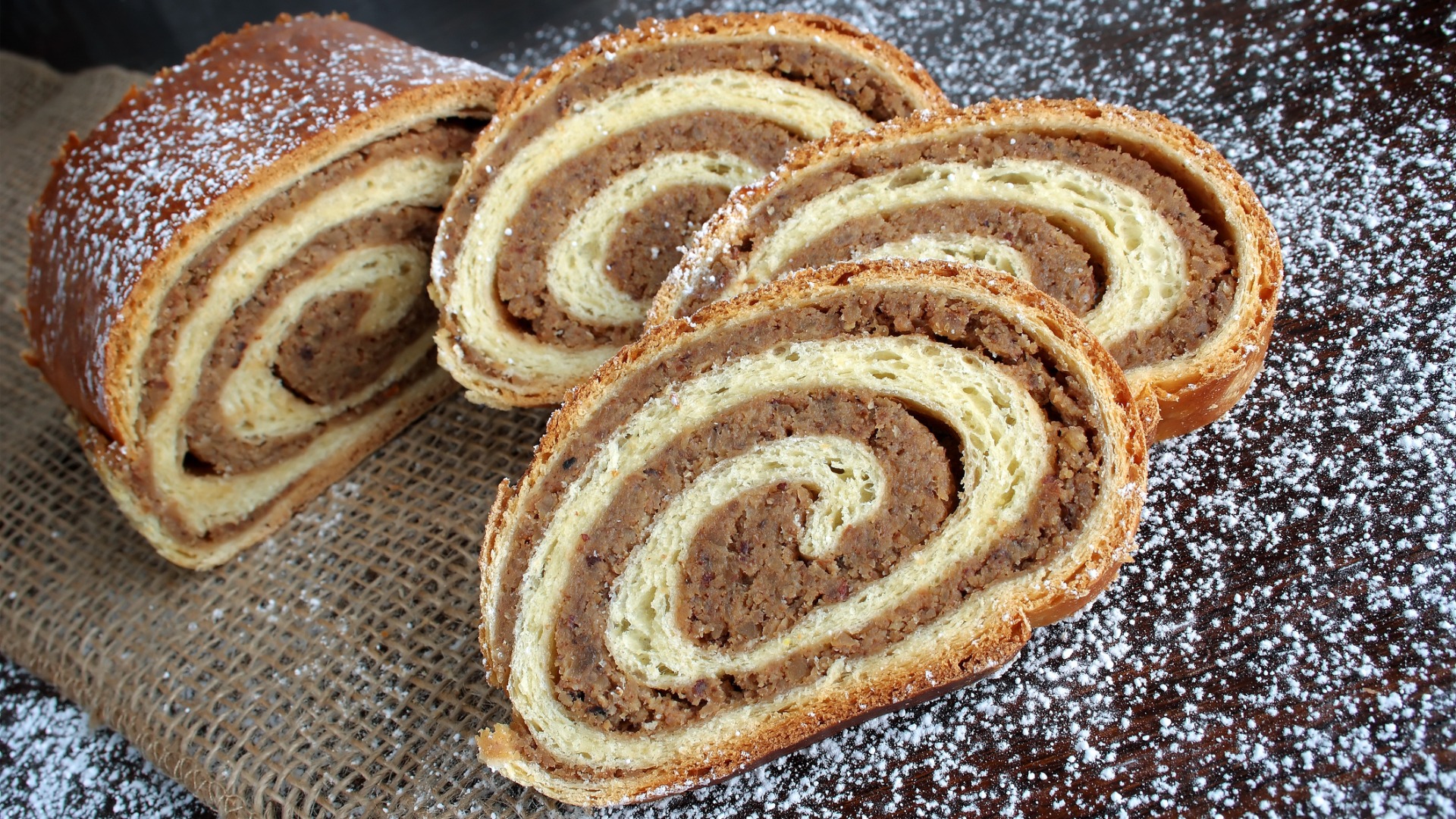
7. Kroštule
Krostule are crispy sweet pastries, prepared mostly in Dalmatia and Istria, but popular throughout Croatia. Although many claim they are traditional to this area, the actual place of origin of this simple dessert is Venice. Venetian Crostoli spread to many countries during the glory days of the Venetian Republic. Different versions can be found in Italy, France, Hungary, Poland, and Greece. Croatians make Krostule mostly on religious holidays – Ash Wednesday, Good Friday, and Christmas Eve, but also during the Carnival season.
This crunchy Croatian dessert is easy to prepare. The main ingredients are flour, eggs, sugar, butter, rum, and salt. Dalmatians add their own staple to the basic dough, lemon liqueur (Limoncello), while Istrians add white wine. You roll the dough thinly, shape it into twisted ribbons, and deep fry. You drain the little pastries and dust them with icing sugar.
Krostule can be served after a meal or with a cup of coffee or tea. It’s best to eat them within a day, while they still crumble in your mouth. Since they are easy to make, most traditional taverns in Istria and the Dalmatian Coast have them on the menu.
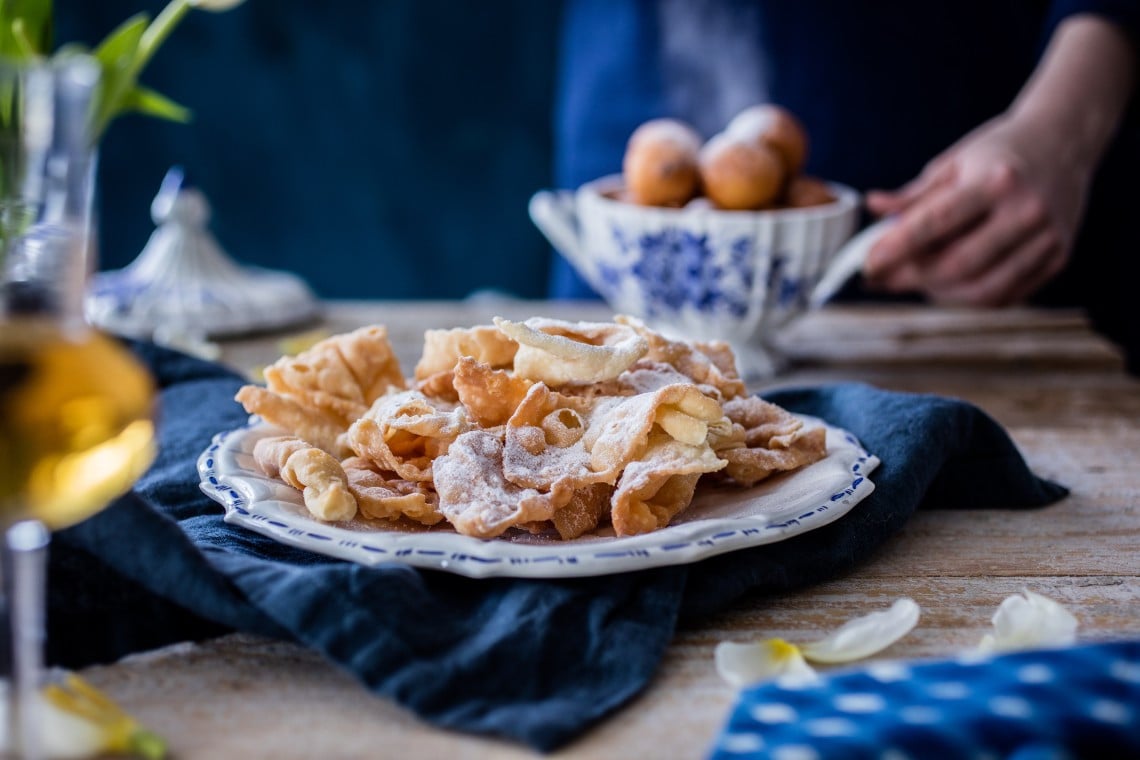
8. Splitska Torta
This traditional Croatian cake, native to the city of Split, is a true Dalmatian favorite. Its roots go back to when people prepared dishes out of what was easily available, either grown in the backyard or easy to find in the area. The cake is indispensable on almost every significant festive occasion in Dalmatia.
Splitska Torta consists of layers of meringue and luscious yellow cream. You prepare meringue from egg whites, almonds, dried figs, sugar, flour, and a pinch of salt. Nowadays, you can find variations to the meringue, where almonds are replaced by walnuts and dried figs by raisins or some other dried fruit.
For the yellow cream, you use egg yolks, powdered sugar, butter, vanilla sugar or vanilla extract, and optionally, lemon or orange zest and a few drops of rum. You spread a third of the cream on each layer of meringue and stack one on top of the other. Before serving, it is not unusual to decorate the top of the cake with grated chocolate.
Of course, nothing beats a homemade cake, but you can find Splitska Torta at many patisseries in and around Split. Luka Ice Cream & Cakes in the center of Split serves Splitska Torta with the perfect airy texture and heavenly taste.
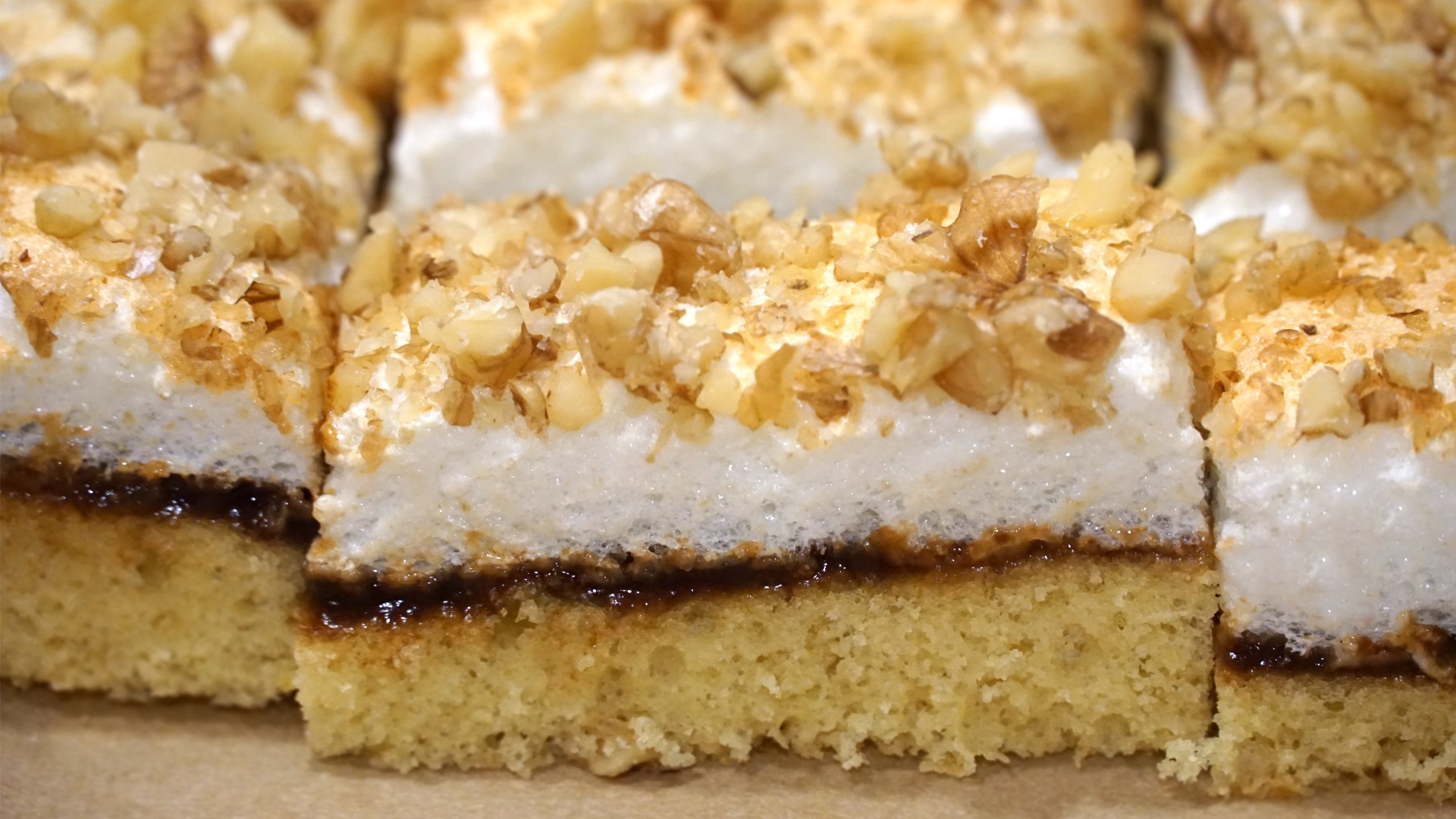
9. Princes Krafne
Princes Krafne, or princess doughnuts in English, are lavish, creamy, and delicious cakes that are very popular in Croatia. Although the precise origin of princess doughnuts is not fully resolved, it is widely accepted that they were first made in France. Eventually, they spread around Europe and the rest of the world. Nowadays, Princes Krafne are among the most beloved Croatian desserts during family gatherings and important holidays.
Although the list of ingredients isn’t very long, making the perfect dough takes time. The key is to measure precisely all the ingredients: flour, water, butter, sugar, eggs, and salt. Opening the oven before the pastry is fully baked is strictly forbidden as it will make your Krafne flat and unappealing. Each pastry needs to be cut in half and filled with yellow custard.
If you manage to make the pastries, the custard should be the easy part. There are different recipes for the custard, but using fresh egg yolks rather than vanilla pudding will earn you respect in the local community. Apart from egg yolks, you will also need milk, sugar, vanilla sugar, butter, and cornstarch.
Princes Krafne should be served cold, but it’s always a challenge to wait. Fortunately, many patisseries in Croatia have them readily available.
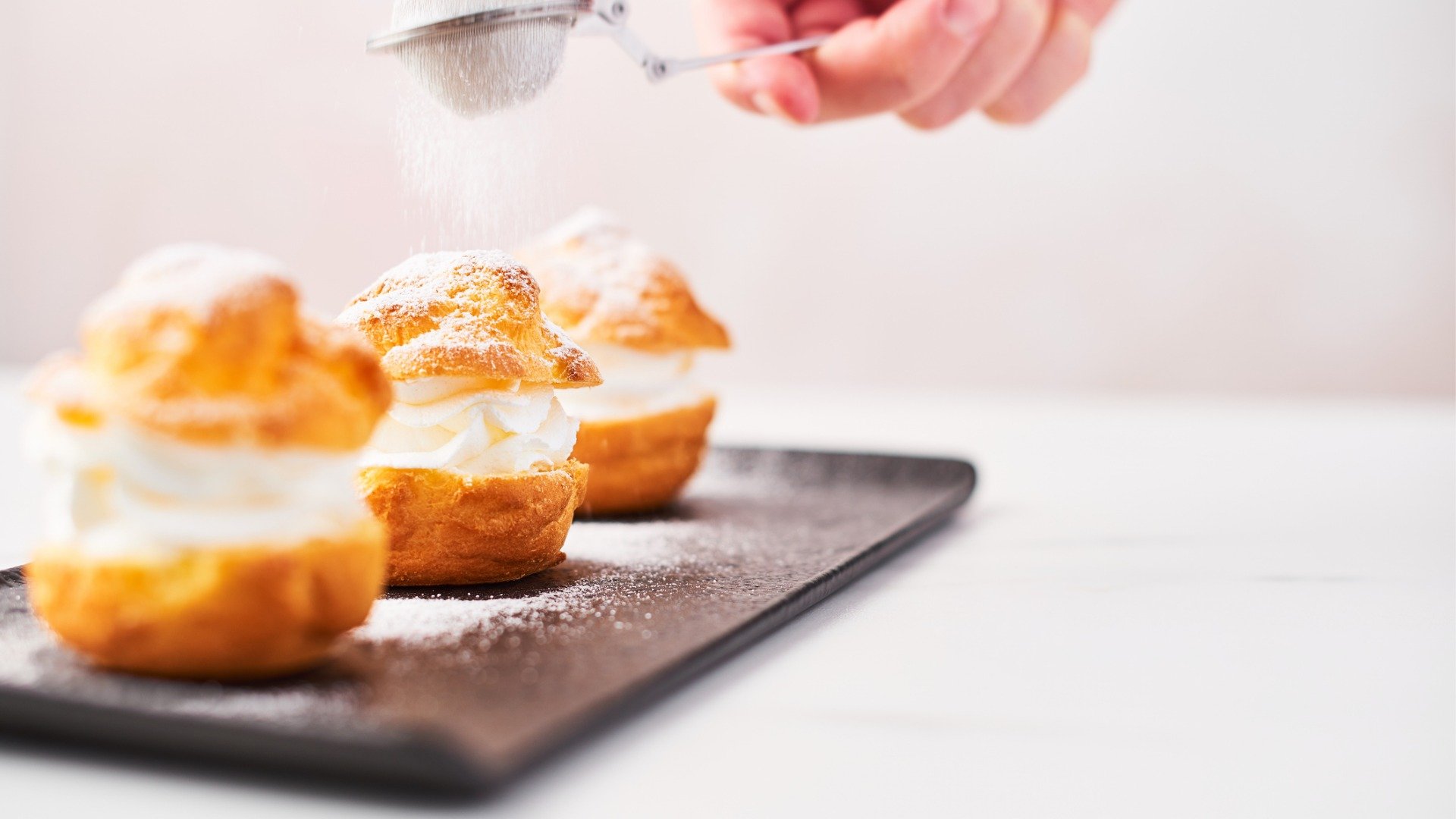
10. Gibanica
Gibanica is a type of flaky layered pie, usually made with cheese. Two versions of Gibanica are most commonly prepared in Croatian households – Medimurska and Prekmurska. They differ in some ingredients, thickness of the filling, type of topping, and taste but both versions are sweet and delicious. Similar specialties are made throughout Southeast Europe. In Slovenia, Serbia, and North Macedonia, Gibanica goes by the same name, while in Bulgaria it’s known as Banica.
Međimurska Gibanica is originally from the Medimurje region in northern Croatia, near the Hungarian border. Softer and juicier than other similar types of cake, it’s prepared with thin phyllo dough and has four layers of filling. The latter’s ingredients are fresh cow’s cheese, grated apples, ground walnuts, and ground poppy seeds with toppings like raisins and cinnamon.
Prekmurska Gibanica is originally from Slovenia, but popular in Croatia as well. It’s named after the Slovenian region of Prekmurje, which lies in northeastern Slovenia, near Hungary.
The phyllo dough for Prekmurska Gibanica is similar to the one for Medimurska Gibanica. There must be eight layers of four fillings, repeated in the same order: poppy seeds, cottage cheese, walnuts, and apples. For both Medimurska and Prekmurska Gibanica, the last part of the dough is topped with sweet or sour cream mixed with the egg yolk. Gibanica is then baked in the oven for about 40 minutes to an hour.
Both Medimurska and Prekmurska Gibanica are cut into cubes or squares and usually served hot, but very tasty when cold as well. You can find Gibanica at traditional restaurants north of Zagreb.
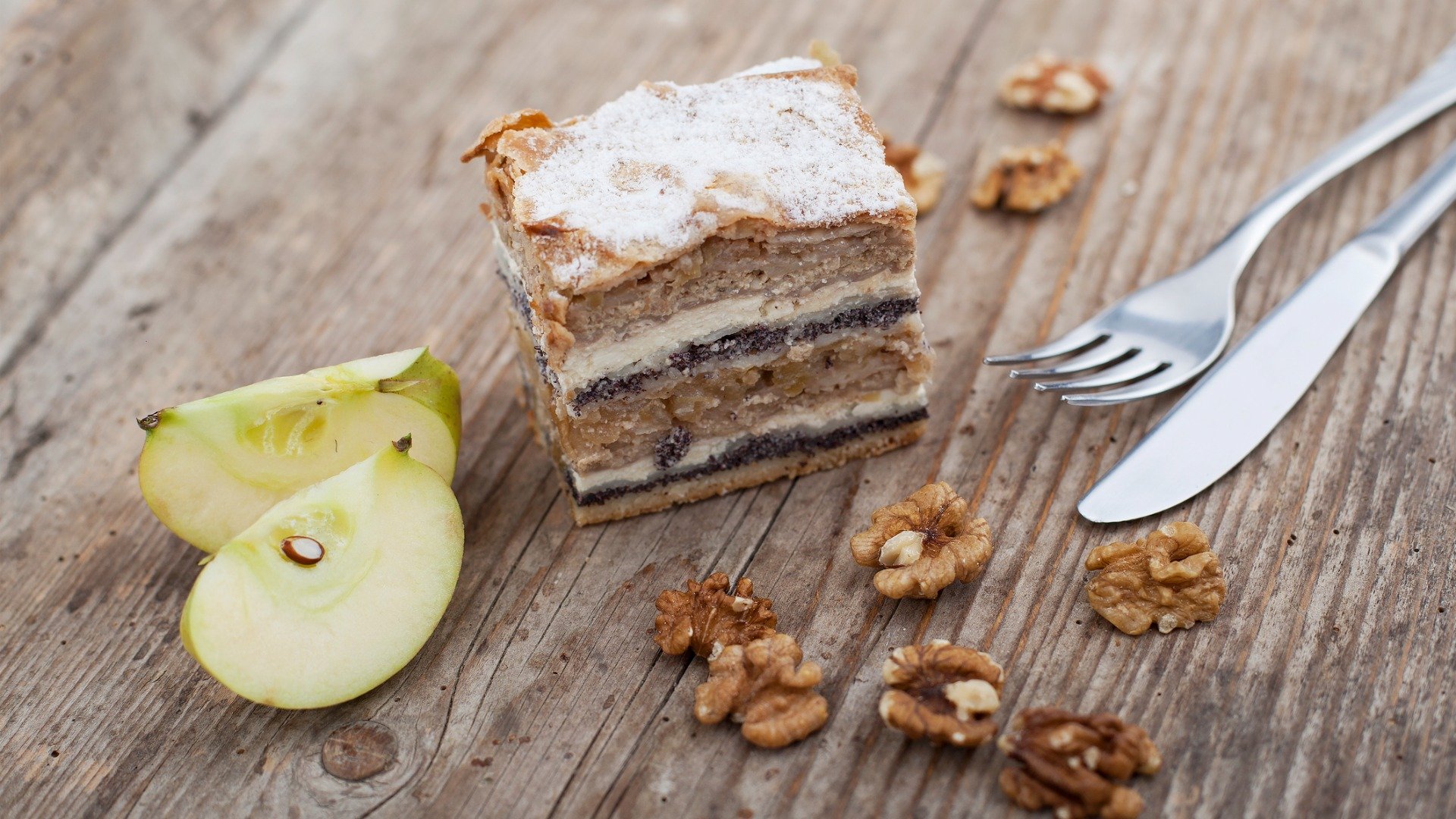
Croatian Dessert Wines
Croatian desserts pair excellently with dessert wines. The latter are sweet wines to be enjoyed as an after-dinner treat. Due to their more intricate production processes, they are considered among the most prestigious and expensive wines in the world. In Croatia, these wines are enjoyed on festive occasions, usually during Christmas, when all the family spends time together.
Prošek
Without a doubt, the most famous Croatian dessert wine is Prosek. The latter shouldn’t be confused with the Italian Prosecco, which is a sparkling wine. Prosek is traditionally made in central and south Dalmatia. Most families who grow grapes make their own wine as well as small amounts of exclusive Prosek dessert wine, which requires about seven times more grape input than an ordinary wine.
Croatians usually enjoy Prosek on special occasions with special people. Traditionally, people would bring Prosek to new mothers as it was considered to have healing and strengthening effects on the body. Prosek can also be an ingredient in traditional Croatian sweets and other classic dishes, like Pasticada.
Muškat Momjanski
Muskat Momjanski is another Croatian dessert wine. It comes from a native grape variety that grows on the hills of Momjan, near the town of Buje, on the Istrian peninsula. Gold or straw yellow in color, this wine pairs well with desserts and usually has aromas of dried figs, honey, and raisins. It’s served chilled at about 54°F.
Zelenac
Last but not least, the Zelenac grape variety, which grows throughout inland Croatia in vineyards near the town of Kutjevo, produces some exquisite dessert wines. While some dessert wines can be sickly sweet, this variety has notes of freshness and sharpness that offset the high sugar content. This wine is best served with fruity or buttery desserts, like an apple strudel or a dry cookie.
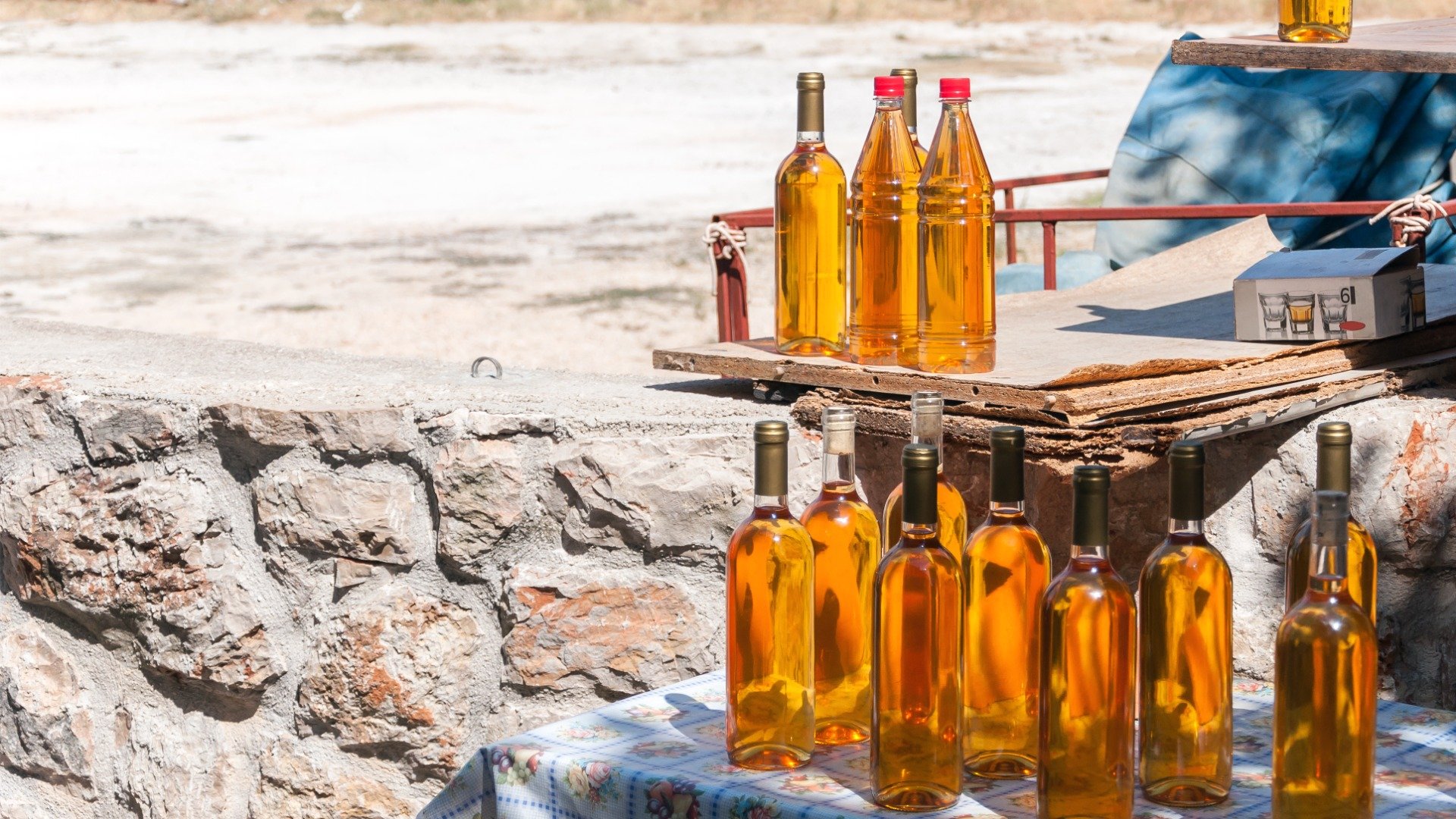
Satisfy Your Sweet Tooth in Croatia With JayWay
We hope that this list of the most popular Croatian desserts inspires you to visit Croatia and indulge in a journey of sugar-fuelled discovery. Whether you’re looking for a foodie trip across Croatia, an itinerary that covers the country’s highlights, or an adventure to explore Croatia’s less-traveled roads, our expert trip planners and amazing local staff will make sure your next Croatia trip offers you nothing but the sweetest of memories.

Josipa comes to us with a strong background in the tourism business in Dubrovnik. With us, she returned to one of her favorite roles, direct contact with guests, after several years in sales roles with one of Dubrovnik’s larger high-end hotels. Although Josipa was not born in Dubrovnik, she finished her studies and started her family life here and she feels Dubrovnik to be her hometown. She knows the best places in the city and the surrounding countryside, which she loves visiting with her family. If you’re starting your trip in Dubrovnik, Josipa will greet you upon arrival and will be your local contact, via the cellphone we provide, throughout your trip.

